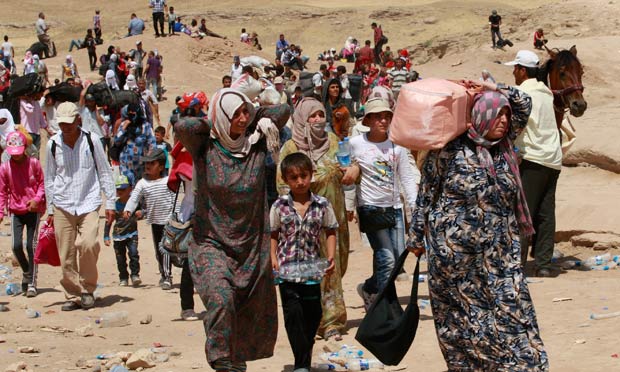UNRWA |
UNHCR | |
| Number of refugees currently served | 4.681 million | 15.4 million
(Plus 800,000 awaiting refugee status and 12 million stateless people w/o refugee status. Number does not account for Arab Spring population upheavals.)
|
| Budget | $ 1.003.7 billion USD | $3.32 billion USD |
| Countries where it operates | 5 | 123 |
| Offices maintained | 5 | a series of regional offices, branch offices, sub-offices and field offices in areas where it operates
|
| Size of staff | 29,000
|
7,200 |
| Staff/client ratio | 1 staff person per 161 refugees
|
1 staff person per 2,100 refugees |
| Definition of refugee | Anyone who lost place of residence and means of livelihood as a result of 1948 Arab-Israeli war.
|
Person who is outside country of his habitual residence due to a well-founded fear of being persecuted. |
Note: 1951 Refugee Convention applies to all refugees except Palestinian Arabs.
|
||
| Descendants of refugees also counted as refugees | Yes.
Indefinitely, via male line. |
No |
| Mandate | To provide humanitarian services to the refugees.
|
To protect refugees and resolve refugee problems. |
| Return to place of origin considered an inalienable right
|
Yes.
No other options are considered. Refugees are kept in temporary situation pending return – with the status of “refugee” sustained even for those who maintain citizenship elsewhere . |
No.
The right protected is to find asylum; resettlement in country of refuge or a third country are options when return is not possible. Goal is to help refugees get on with their lives and as a result most are resettled, not repatriated.
|
| Education and Health Care provided | Yes, UNRWA maintains schools and clinics. | Only in certain instances. Countries of refuge are expected to assist. |
UNRWA (United Nations Relief and Works Agency) was created just for Palestinian Arab refugees within a defined area of operation. UNHCR (United Nations High Commission for Refugees) is charged with responsibility for all other refugees.
Information acquired from: www.unrwa.org and www.unhcr.org









